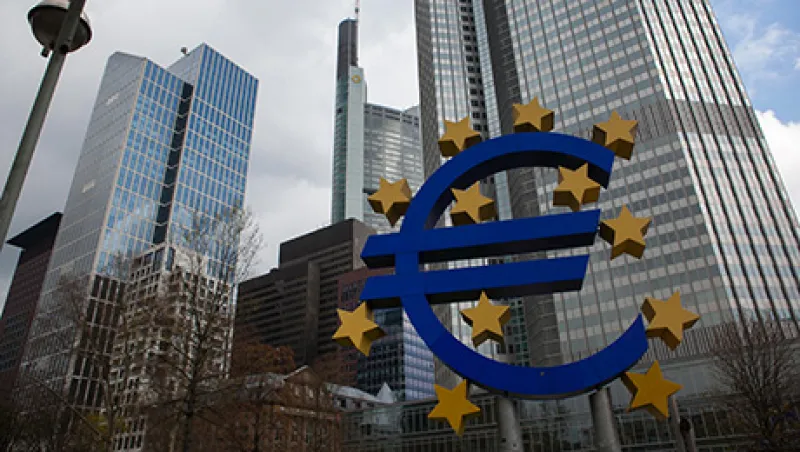The Franco-German alliance has been a driving force for euro zone integration for decades. Today, however, the growing economic and demographic gap between Germany and France has resulted in fundamentally different policies. With these two major players so removed from each other in their views, it’s difficult to envisage full political union — or further economic integration — across the region.
The euro zone’s situation has shown signs of improvement of late, as economic activity has strengthened in almost all countries. The institutional environment is looking more promising too, as euro zone leaders agree on two out of three stages of the banking union, a consensus reflected in the sovereign bond markets — spreads have narrowed significantly, and several bailed-out countries are issuing bonds again or plan on doing so in the near future.
Yet problems remain for true, well-functioning monetary unification. From a long-term perspective, the euro zone can become an optimal currency area only if one of the following two conditions is met: All the euro zone countries (including France and Germany) have the same structural features, or their political integration becomes much stronger. The first condition is nearly impossible to meet.
France and Germany are on opposite ends of the spectrum when it comes to monetary and fiscal policy — and in their reactions to a strong exchange rate or an external current-account surplus. Germany, for instance, acts largely in response to an aging population, whereas France bases its policies on a return to growth.
Indeed, the main concern for Germany today is the ability to meet its pension obligations despite a shrinking labor force, which explains its drive to maintain the strong position of its heavy industries, like manufacturing, that pay relatively high wages. Low inflation also remains a key priority; it keeps real long-term interest rates positive and increases the returns on pension regimes and private savings.
The need for demand-side growth in Germany is limited when the government is clearly trying to maintain a surplus. In fact, vigorous domestic demand would only jeopardize the external surplus and the accumulation of external assets.
France takes a very different approach. As the country boasts more encouraging demographic prospects, its government is focusing on a return to growth — with real long-term interest rates that favor borrowers. In sharp contrast to Germany, France has continued accumulating fiscal deficits to finance public investments. Accordingly, public investment is much higher in France than in Germany.
It’s interesting then that French President François Hollande has recently pledged to cut public spending by more than €50 billion ($69 billion) in the period 2015–17. As a government reduces its spending, there are inevitably cuts across areas that are useful (even necessary) for growth — such as public investment, research and development, health care and education. Perhaps this is why Hollande has restricted the increase in spending to 0.2 percent a year in volume terms, even though this falls well short of what is required. According to our calculations,French government spending would need to decline by at least 2 percent by 2017 if the government is to meet its budgetary commitments.
The divide between these two countries becomes clearer still where the euro is concerned. Thanks to Germany’s production of upmarket goods, a rising euro barely reduces the country’s exports in volume terms. Furthermore, Germany imports the bulk of its industrial components from countries outside the euro zone — so it is only when the euro depreciates (increasing the price of these imports) that German industry feels the impact. Because high-end goods form a much smaller proportion of France’s industrial output, the country’s exports — and market share — fall sharply when the euro appreciates.
This divergence in response to the real exchange rate (and hence competitiveness) was one of the main causes of the asymmetry in industrial prices between these countries from 1998 to 2012. Germany managed to maintain its strong industrial position,whereas a loss of competitiveness drove industrial prices down in France.
Devising a common economic policy for the euro zone will prove to be exceedingly difficult. This is yet another illustration of the complexities of a currency area formed of countries with major structural asymmetries. In fact, it has always been the case that countries pursue diverse strategic objectives — but as the economic gap between Germany and France in particular has widened, it has become a major obstacle to the vigor of the euro zone’s monetary unification. • •
Patrick Artus is the chief economist at investment bank Natixis in Paris.






